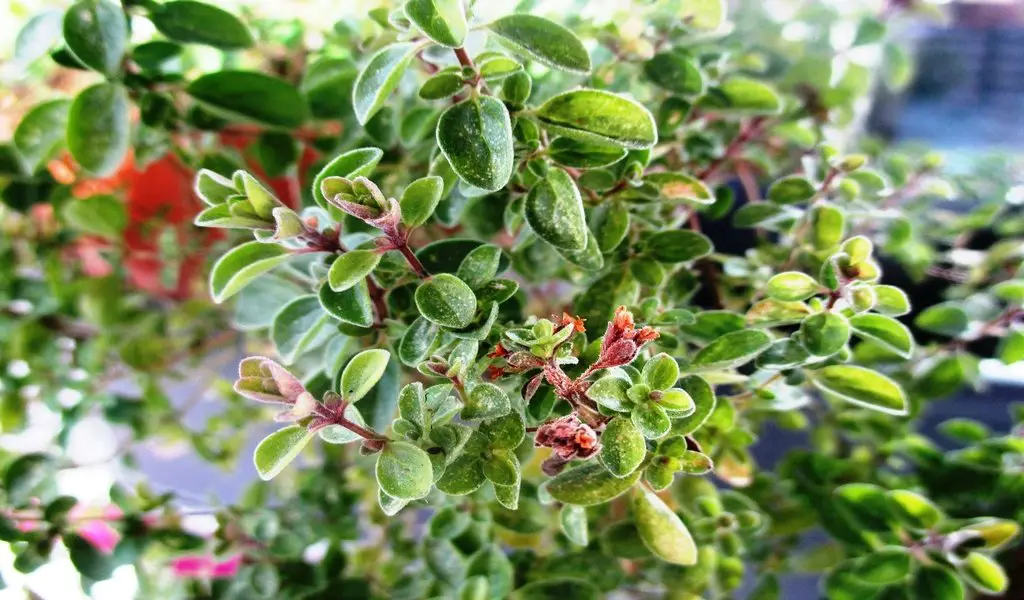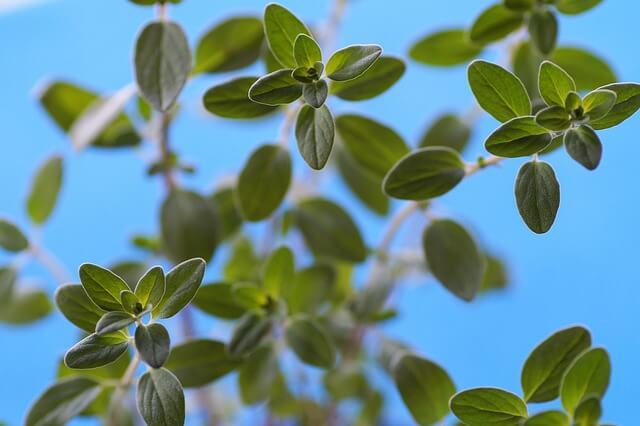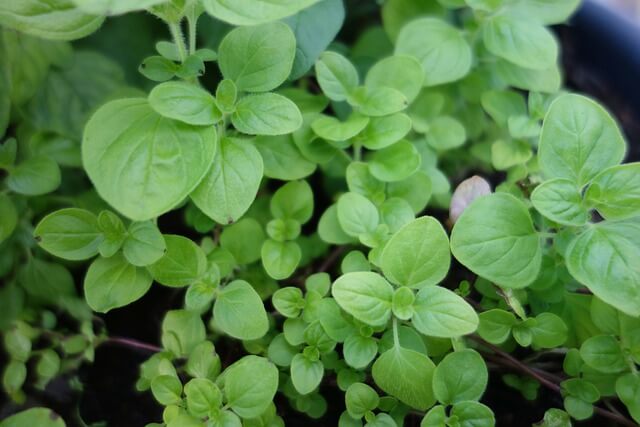How to Grow Sweet Marjoram: A Complete Grower’s Guide!
Sweet marjoram (Origanum majorana) is a beloved herb known for its gentle, sweet, and slightly citrusy fragrance. It’s a staple in Mediterranean cuisine, but its appeal goes far beyond the kitchen. Whether you’re a seasoned gardener or just starting out, learning how to grow sweet marjoram is a rewarding project that brings both beauty and flavor to your space. This in-depth guide will lead you through every stage of cultivating sweet marjoram, from seed to harvest, ensuring you have all the knowledge needed for a thriving, productive herb garden.
Table of Contents
- 1 Why Grow Sweet Marjoram?
- 2 Getting Started: Understanding Sweet Marjoram
- 3 How to Grow Sweet Marjoram from Seed or Young Plants
- 4 Planting Sweet Marjoram
- 5 Caring for Sweet Marjoram
- 6 Overwintering and Troubleshooting
- 7 Harvesting and Storing Sweet Marjoram
- 8 Culinary and Ornamental Uses
- 9 Propagation Tips
- 10 Frequently Asked Questions
- 11 Expert Tips for Success
- 12 Conclusion
- 13 Author
Why Grow Sweet Marjoram?
Adding sweet marjoram to your home garden offers a multitude of benefits. Not only does it enhance a wide variety of dishes with its subtle, aromatic flavor, but it also serves as an attractive, low-maintenance plant that fits seamlessly into herb gardens, containers, and even decorative borders. Marjoram is known for attracting beneficial insects like bees and butterflies, which can help improve pollination in your garden. Its compact size makes it perfect for small spaces, balconies, or windowsills, and its resilience means even novice gardeners can enjoy success. Plus, the satisfaction of harvesting your own fresh herbs is unmatched, making marjoram a must-have for any home grower.
Getting Started: Understanding Sweet Marjoram
What is Sweet Marjoram?
Sweet marjoram is a tender perennial that hails from the Mediterranean region, where it has been cherished for centuries. The plant forms a bushy, low-growing mound of soft, pale green leaves that release a delightful aroma when touched. While closely related to oregano, marjoram stands out for its milder, sweeter notes, making it a favorite in delicate recipes. It can be grown as a perennial in warmer climates, but in cooler areas, it is often cultivated as an annual. Understanding its natural preferences helps ensure a thriving plant that can be enjoyed year after year.
Ideal Growing Conditions
To thrive, sweet marjoram needs a sunny location with at least six hours of direct sunlight daily. It prefers well-drained, slightly alkaline soil with a pH between 6.7 and 7.0. The herb is drought-tolerant once established, making it ideal for gardeners who may occasionally forget to water. However, it is sensitive to excess moisture, so ensuring good drainage is crucial. Whether you’re growing it in the ground or in containers, recreating these Mediterranean-like conditions will give your marjoram the best start possible.
How to Grow Sweet Marjoram from Seed or Young Plants
Starting from Seed
Growing sweet marjoram from seed is a cost-effective and satisfying way to begin. Start by sowing seeds indoors about 6–8 weeks before your area’s last expected frost. Scatter the tiny seeds over the surface of moist seed-starting mix, pressing them in gently but not covering them, as they require light to germinate. Keep the soil consistently moist and maintain a temperature of at least 15°C (60°F). Place the trays in a bright spot or under grow lights for best results. Patience is key, as germination can take anywhere from 7 to 14 days, sometimes a bit longer.
Transplanting Seedlings
Once your seedlings have developed two sets of true leaves, it’s time to move them to individual pots or larger modules. This gives their roots room to grow and helps prevent overcrowding. Before planting them outdoors, gradually acclimate the young plants to outside conditions by placing them outdoors for a few hours each day over a week. This process, known as hardening off, helps prevent transplant shock and ensures your marjoram will adapt smoothly to its new environment.
Using Young Plants
If you prefer a quicker start, purchasing young marjoram plants from a nursery is an excellent option. These starter plants can be transplanted outdoors after the last frost, giving you a head start on the growing season. When planting, space each plant about 20–30 cm (8–12 inches) apart to allow for their spreading habit. Water them well after planting and keep an eye on them during their first few weeks as they establish themselves in their new home.
Planting Sweet Marjoram
Site Selection
Choosing the right spot for your sweet marjoram is crucial for healthy growth. Look for a warm, sunny location that receives at least six hours of sunlight each day. Marjoram thrives in sheltered spots that protect it from strong winds, which can dry out or damage the delicate stems. If your garden soil tends to retain water, consider planting marjoram in raised beds or containers to improve drainage. This is especially important in regions with heavy rainfall, as marjoram does not tolerate soggy roots.
Soil Preparation
Before planting, take time to prepare the soil. Work several inches of well-rotted compost or organic matter into the top layer of soil to boost fertility and improve structure. If you’re planting in containers, choose a high-quality, free-draining potting mix and consider adding perlite or coarse sand to further enhance drainage. Marjoram prefers soil that’s not overly rich, as too much nitrogen can reduce the intensity of its flavor. Aim for a slightly alkaline pH, and amend the soil with lime if necessary.
Planting Steps
To plant sweet marjoram, dig holes spaced 12–18 inches apart, giving each plant enough room to spread. Gently remove the plant from its pot, taking care not to disturb the roots, and place it in the hole at the same depth it was growing before. Fill in around the roots with soil, firming gently, and water thoroughly to settle the plant in place. Applying a layer of mulch, such as gravel or compost, around the base of the plant helps retain moisture, suppress weeds, and keep the roots cool during hot weather.
Caring for Sweet Marjoram
Watering
During the first few weeks after planting, keep the soil consistently moist to help the roots establish. Once the plant is settled, marjoram prefers the soil to dry out slightly between waterings. Overwatering is one of the most common problems, particularly in containers, so always check the soil moisture before watering again. In hot, dry periods, increase watering frequency, but avoid letting the roots sit in water, as this can lead to rot.
Feeding
Sweet marjoram is not a heavy feeder and actually produces more flavorful leaves in lean soil. For garden-grown plants, additional feeding is rarely necessary. However, if you’re growing marjoram in pots, a light application of a balanced, water-soluble fertilizer every 4–6 weeks during the growing season can help maintain vigor. Avoid high-nitrogen fertilizers, which can encourage lush foliage at the expense of flavor and aroma.
Pruning and Training
To encourage bushy, compact growth, pinch out the growing tips when plants reach about 6–8 inches tall. Regularly harvesting or trimming the stems also helps prevent the plant from becoming leggy and encourages the production of new shoots. If flower buds begin to form and you wish to prolong leaf production, pinch them off to direct the plant’s energy into foliage rather than flowers.
Weeding and Mulching
Keep the area around your marjoram free from weeds, especially while the plants are young and still establishing. Weeds compete for water and nutrients and can harbor pests. Applying a mulch of compost or gravel around the base of the plants helps suppress weeds, retain soil moisture, and regulate soil temperature, giving your marjoram the best chance to thrive.
Overwintering and Troubleshooting
Winter Care
In warmer climates (zones 9–10), sweet marjoram can be grown as a perennial and will survive mild winters with a protective mulch layer to insulate the roots. In regions with cooler winters (zones 7–8), heavy mulching may help, but survival is not guaranteed, especially during harsh cold snaps. In areas with freezing temperatures, treat marjoram as an annual or pot up your plants and bring them indoors to a sunny, frost-free location for the winter months. Indoor marjoram will continue to provide fresh leaves throughout the colder season.
Common Problems
Sweet marjoram is generally trouble-free, but a few issues can arise. The most common problem is root rot, which results from poor drainage and overwatering. Always ensure your soil or container mix drains well, and water only when the top inch of soil feels dry. Pests are rare, but you may occasionally encounter aphids or spider mites, especially on indoor plants. These can be managed by rinsing the foliage with water or using insecticidal soap. Fungal diseases can occur in humid conditions, so ensure good air circulation around the plants.
Harvesting and Storing Sweet Marjoram
When to Harvest
You can begin harvesting sweet marjoram about 4–6 weeks after planting or once the plants are at least 4–6 inches tall. For the best flavor, pick leaves just before the plant starts to flower, as this is when the essential oils are at their peak. Regular harvesting not only provides you with fresh herbs but also encourages the plant to produce new growth, resulting in a bushier, more productive plant throughout the season.
How to Harvest
To harvest, use clean, sharp scissors or pruners to snip off sprigs or individual leaves. For drying, cut stems just as flower buds begin to form but before they open, as this is when the leaves are most aromatic. Avoid removing more than one-third of the plant at any one time to ensure it remains healthy and continues to grow vigorously. Frequent, light harvesting is better than infrequent, heavy cutting.
Storing Marjoram
After harvesting, you can use marjoram fresh or preserve it for later use. To dry, tie small bunches of stems together and hang them upside down in a warm, dry, and well-ventilated area away from direct sunlight. Once the leaves are completely dry and crumbly, strip them from the stems and store them in airtight containers. Dried marjoram retains its flavor for many months, making it easy to enjoy your homegrown herbs year-round.
Culinary and Ornamental Uses
Sweet marjoram is a versatile herb that enhances a wide range of dishes, from soups and stews to salads and dressings. Its gentle flavor pairs well with vegetables, poultry, fish, and even eggs, making it a staple in many kitchens. Beyond its culinary uses, marjoram adds visual appeal to herb gardens and mixed borders with its soft, mounding foliage and delicate white or pale pink flowers. The blooms are not only attractive but also serve as a magnet for pollinators like bees and butterflies, supporting a healthy garden ecosystem.
Propagation Tips
Expanding your marjoram patch or sharing plants with friends is easy with a few simple propagation techniques. In summer, take softwood cuttings from healthy, non-flowering stems. Dip the cut ends in rooting hormone and plant them in moist, well-draining soil. Alternatively, you can encourage low-growing stems to root by gently bending them to the ground and covering a portion with soil-a process known as layering. Mature plants can also be divided in spring or autumn by carefully separating the root ball into smaller sections and replanting them. These methods ensure a steady supply of marjoram for years to come.
Frequently Asked Questions
Can I grow sweet marjoram indoors?
Absolutely! Marjoram is well-suited to indoor cultivation, provided it receives plenty of sunlight. Place pots on a sunny windowsill that gets at least six hours of light per day, and ensure the container has good drainage. Indoor marjoram can supply you with fresh herbs even during the winter months.
How tall does sweet marjoram grow?
Sweet marjoram typically grows to a height of 12–24 inches (30–60 cm), with a spreading, bushy habit. Its compact size makes it ideal for container gardening and small spaces, while still producing an abundance of flavorful leaves.
How long does it take to mature?
From seed, sweet marjoram usually takes about 60–90 days to reach a harvestable size. If you start with young plants, you can begin harvesting even sooner. With proper care, marjoram will continue to produce new growth throughout the growing season.
Expert Tips for Success
- Select a sunny, sheltered location to maximize growth and flavor.
- Avoid planting marjoram in heavy, clay soils that retain water; instead, opt for raised beds or containers if necessary.
- Regular harvesting and pinching back of stems encourage bushiness and prevent the plant from becoming woody or leggy.
- In colder climates, consider growing marjoram as an annual or overwintering potted plants indoors to extend your harvest.
Conclusion
Growing sweet marjoram at home is a simple yet deeply satisfying experience, offering a continuous supply of fresh, aromatic leaves for your kitchen and a touch of Mediterranean charm to your garden. By following these expanded, step-by-step instructions, you’ll be well-equipped to nurture healthy, productive marjoram plants, regardless of your gardening experience. Embrace the joy of cultivating your own herbs and enjoy the rich flavors and fragrances that sweet marjoram brings to your home all year round.
With a little attention and care, sweet marjoram will reward you with lush growth, delightful aroma, and a steady harvest of leaves to elevate your culinary creations and beautify your living space!












